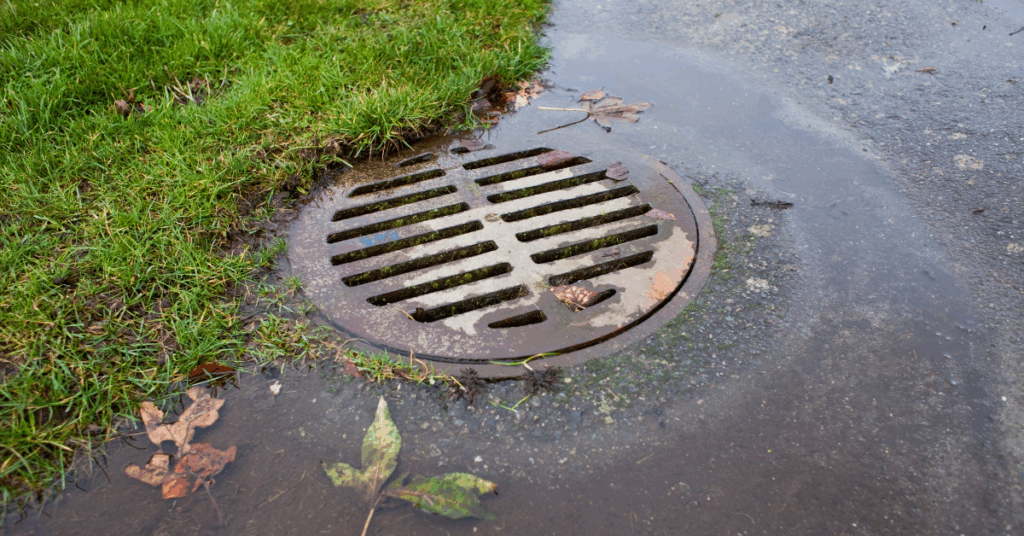A stormwater management system is the kind of infrastructure you don’t think about until you’re faced with the clear evidence it’s not working: flooding. Stormwater management systems are designed to control stormwater runoff, thereby greatly reducing the risk of flooding; they also protect local water sources from runoff-related pollution. These systems are made up of catch basins, storm drains, inlets, pipes, and outfalls, which capture stormwater and direct it away from roads and buildings. Over time, however, they can become clogged with debris or other contaminants. Without regular cleaning and maintenance, blockages and damage to the system can occur. That’s why stormwater system cleaning is a crucial part of responsible property and infrastructure management.
1. Initial Inspection and Assessment
Before any cleaning begins, a professional stormwater service team will conduct a thorough inspection of the system. This inspection includes:
- Examining catch basins, inlets, and outfalls for visible signs of debris, standing water, or physical deterioration.
- Using cameras or visual checks to identify sediment buildup, tree root intrusion, or any structural blockages.
- Assessing whether the system is functioning as intended or if areas are experiencing slow drainage or overflow.
This initial assessment of the stormwater management system helps create a tailored cleaning plan, ensuring every component gets the attention it needs to function properly.
2. Removal of Debris and Sediment
Once areas of debris and sediment in the system are clearly identified, the next step is removing them. This part of the stormwater maintenance process typically involves:
- Deploying vacuum trucks to extract sediment, leaves, litter, and other waste from catch basins and underground pipes.
- Using manual tools in hard-to-reach spots or delicate areas where machinery isn’t ideal or even feasible.
- Ensuring that all debris is collected and disposed of properly, in compliance with local and federal environmental regulations.
Effective debris removal improves stormwater flow, which reduces the risk of backups (and therefore flooding) and pollutant discharge into nearby waterways.
3. Jetting and Flushing the System
To fully clear the stormwater management system, technicians often use a method called hydro-jetting:
- A high-pressure water jet is inserted into pipes and culverts to flush out any remaining sediment, grease, or hardened blockages.
- This process scours the interior walls of the pipes, restoring them to near-original capacity.
- Hydro-jetting is especially useful for long pipe runs or complex networks, ensuring no hidden buildup is left behind.
Hydro-jetting not only clears blockages but also helps prevent future accumulation in the stormwater management system by improving stormwater-flow efficiency.
4. Inspection for Structural Issues
Once the stormwater management system is clean, it’s easier to conduct a detailed structural inspection: another key part of stormwater maintenance. This involves:
- Looking for signs of erosion, cracks, corrosion, or collapsed areas within the system.
- Using cameras or physical checks to document damaged components or areas that may require repair or replacement.
- Identifying areas where vegetation or invasive roots may be compromising the system’s integrity.
Catching and addressing these issues early helps prevent costly repairs and system failures down the line.
5. Final Report and Recommendations
After cleaning and inspection are complete, the service team will compile a thorough report that includes:
- A summary of the work performed, including areas cleaned and equipment used.
- Findings from the structural inspection, with documentation such as images or video footage.
- Stormwater maintenance recommendations, such as how often cleaning should occur and any repairs that should be prioritized.
This final and comprehensive report is invaluable for property managers, municipalities, and contractors working to stay compliant with stormwater management regulations.
Keeping Rain In the Drain
It’s no secret that storms are increasing in intensity; this makes it all the more important to stay on top of stormwater management system maintenance and cleaning, but it’s more than just clearing out a few drains. It’s a proactive approach to protecting the public and the environment. Routine maintenance of the kind described here goes a long way toward preventing flooding, avoiding costly repairs, and keeping stormwater management systems compliant with local and federal guidelines. If it’s been a while since your last cleaning or inspection, ACE Environmental Services is here to help. Our experienced team uses state-of-the-art equipment to provide thorough, efficient service with minimal disruption to your site. To schedule your next cleaning and inspection, contact us today.

